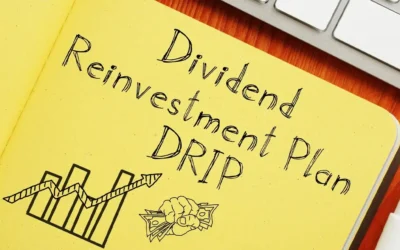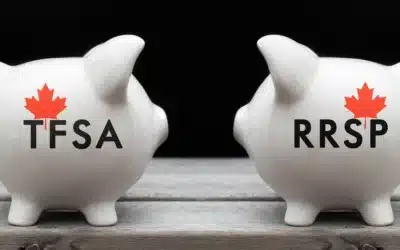Investment Basics
Stay informed and educated with topical insights from Harvest ETF professionals.
Drip ETF Investing in Canada: Pros and Cons
The Harvest Distribution Reinvestment Program (DRIP) reinvests income paid to…
Currency Considerations for Non-Domestic Equity ETFs
There are currency considerations that impact the price and performance of ETFs like the Harvest Healthcare Leaders Income ETF (HHL:TSX).
What is an RRSP and How does it work?
Discover the benefits of RRSPs in Canada: how they work, contribution limits, tax advantages, drawbacks, and how to open an account.
What’s the Difference Between Registered and Non-Registered Accounts?
If you’re a financial advisor or someone looking to invest their own money, it’s important to understand the difference between registered…
Currency Hedged ETFs vs Unhedged ETFs: Which is Right for You?
Explore Harvest ETFs resilient investment approaches to help achieve long-term goals & discover covered call strategies…
Canadians: This Utilities ETF Offers an Opportunity Play Today
The utilities sector has been battered in 2022 and 2023, but peak rates may provide an opportunity to take advantage of valuations in this utilities ETF.
A Closer Look at ETF Liquidity
The rise of ETFs since the 2008-2009 financial crisis has led to questions about how easy they might be to buy and sell, especially…
Why the highest yielding investment funds might not be the best for an investor | ETFs
Generating Tax Efficient Cash Flows Using Covered Calls
Covered call ETFs can generate tax efficient cash flows, learn about key considerations such as capital gains tax exposure and ROC here.
Harvest’s ETF Unit Classification Table
Priced in Canadian dollars, distribution paid in CAD and has the portfolio value hedged to the…
How Does a Barbell Bond Strategy Work?
Learn what barbell bond investing is, how it works, and what kind of investors might want to employ it in the current environment.
The Yield Curve and the Bond Market: Why Should You Invest?
Recent central bank policy has investors with their eyes on the yield curve and the bond market in 2023, spurring interest in fixed income ETFs
Resilient Covered Call Strategies for Volatile Times
Explore Harvest ETFs resilient investment approaches to help achieve long-term goals & discover covered call strategies…
Costs and Benefits of ETF Investing
ETFs are a relatively low-cost investment product. That is one of the keys to their popularity among…
Mastering Tax Efficiency: Unveiling the Power of Equity Income ETFs
Harvest ETFs explains how Equity Income ETFs can be indispensable tools for a tax efficient investment strategy…
What is an ETF? Benefits of Exchange-Traded Funds
Discover the advantages of ETFs and how they work. Learn what an ETF is, how to combat risks, and how to add them to your portfolio.
Common Benefits of Covered Call ETFs
Understanding covered call ETFs can be important for your investing strategy. Learn about the benefits of covered call option ETFs here!
Why Some Investors Prefer Currency-hedged ETFs?
As a Canadian investor, if you hold an ETF with foreign equities in the portfolio, you may want protection…
ETF vs. Mutual Fund: The Key Differences | Harvest ETFs
Understanding the difference between ETF and mutual fund investments in Canada can be key to successful investing. Learn more here!
What is concentration risk, and why might it concern tech investors?
The investment risk tied to over allocation to a few companies should be considered for investors looking at sectors with a few…
What is Return of Capital (ROC)?
Certain ETF distributions can be characterized as Return of Capital (ROC) for tax purposes, learn why that is and what it means here.
ETF vs Index Fund: The Key Differences
When choosing between index funds and ETFs, Canadian investors often want to know what these are? Read Harvest ETFs Blog here!
How Covered Call ETFs can serve Ultra High Net Worth Investors
Investor category has unique needs and priorities, some of which can be well served…
Disclaimer
You will usually pay brokerage fees to your dealer if you purchase or sell units of the Fund(s) on the TSX. If the units are purchased or sold on the TSX, investors may pay more than the current net asset value when buying units of the Fund(s) and may receive less than the current net asset value when selling them. There are ongoing fees and expenses associated with owning units of an investment fund. Investment funds are not guaranteed, their values change frequently and past performance may not be repeated. An investment fund must prepare disclosure documents that contain key information about the fund. You can find more detailed information about the fund in these documents.
Certain statements in the Harvest Blog are forward looking Forward-looking statements (“FLS”) are statements that are predictive in nature, depend upon or refer to future events or conditions, or that include words such as “may,” “will,” “should,” “could,” “expect,” “anticipate,” “intend,” “plan,” “believe,” or “estimate,” or other similar expressions. Statements that look forward in time or include anything other than historical information are subject to risks and uncertainties, and actual results, actions or events could differ materially from those set forth in the FLS.
FLS are not guarantees of future performance and are by their nature based on numerous assumptions, which include, amongst other things, that (i) the Fund can attract and maintain investors and have sufficient capital under management to effect their investment strategies, (ii) the investment strategies will produce the results intended by the portfolio managers, and (iii) the markets will react and perform in a manner consistent with the investment strategies. Although the FLS contained herein are based upon what the portfolio manager believe to be reasonable assumptions, the portfolio manager cannot assure that actual results will be consistent with these FLS.
Unless required by applicable law, Harvest Portfolios Group Inc. does not undertake, and specifically disclaim, any intention or obligation to update or revise any FLS, whether as a result of new information, future events or otherwise.























